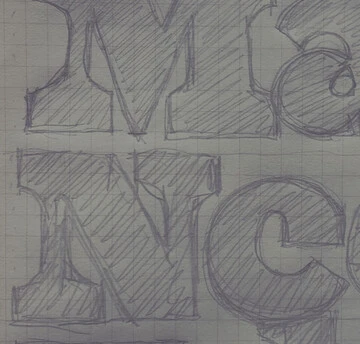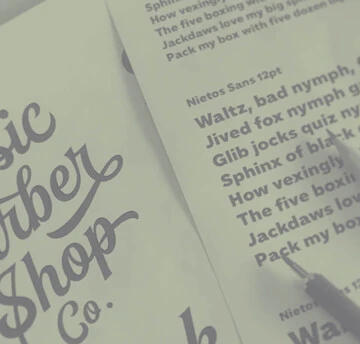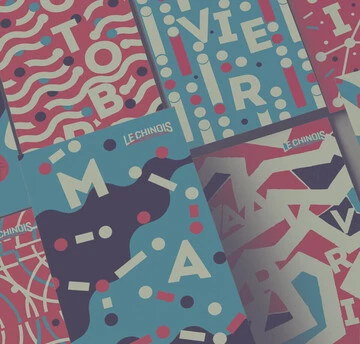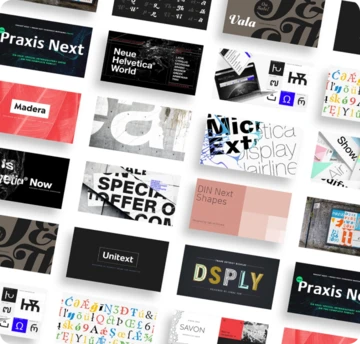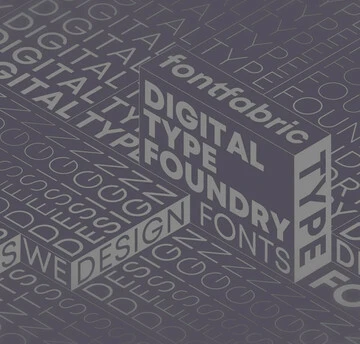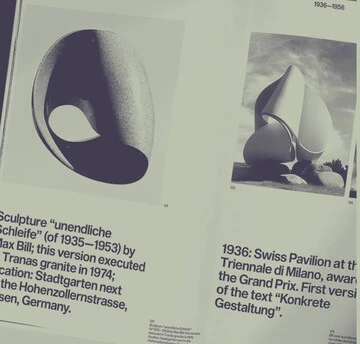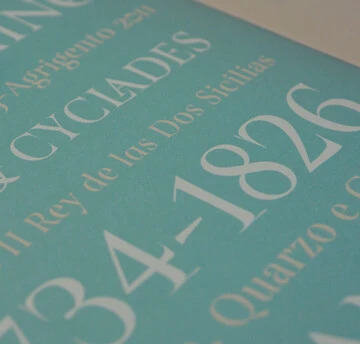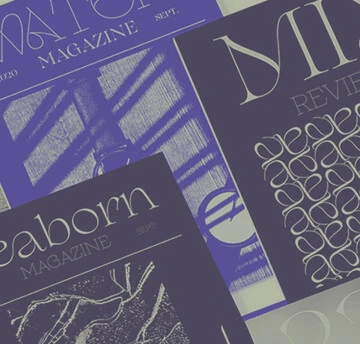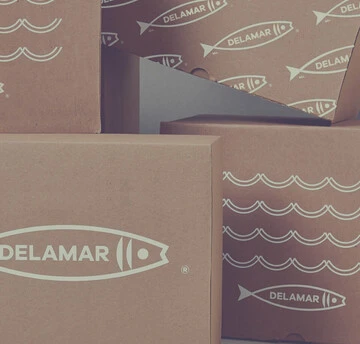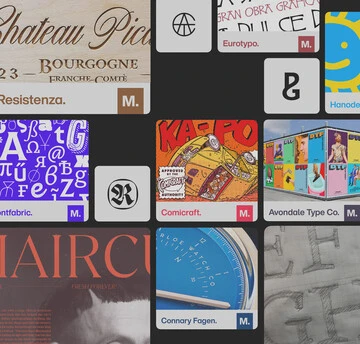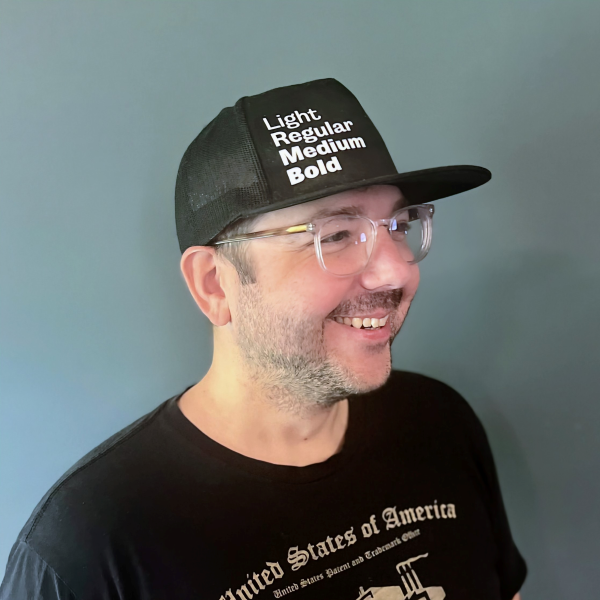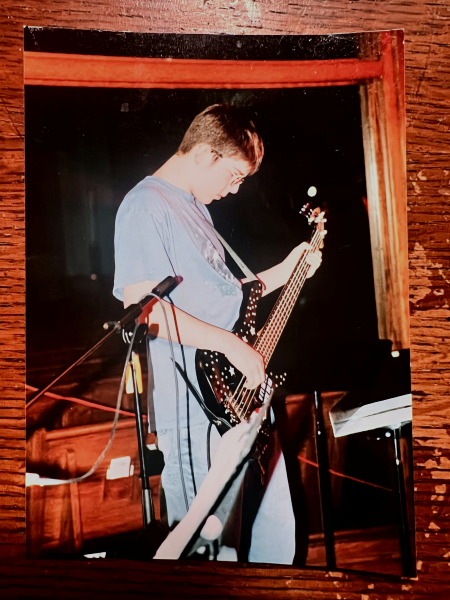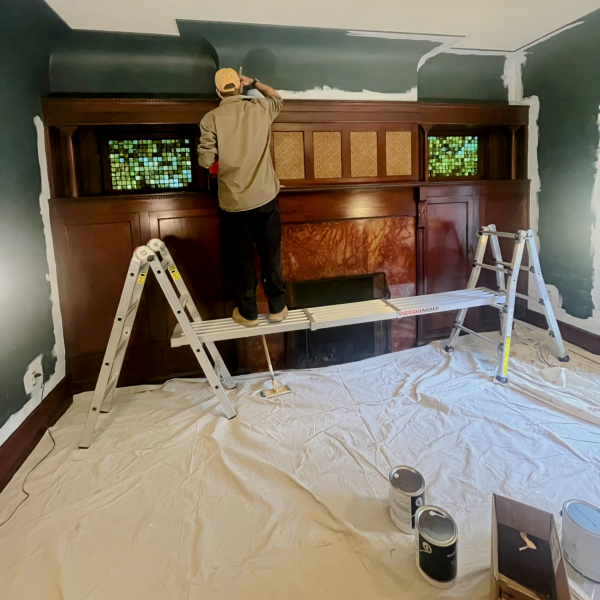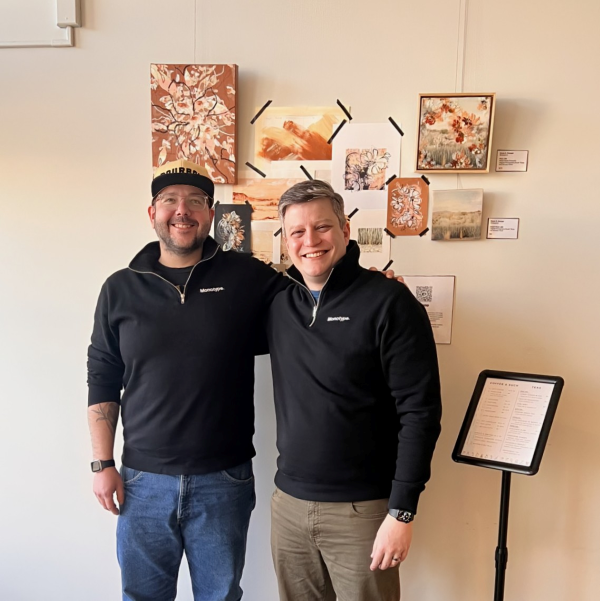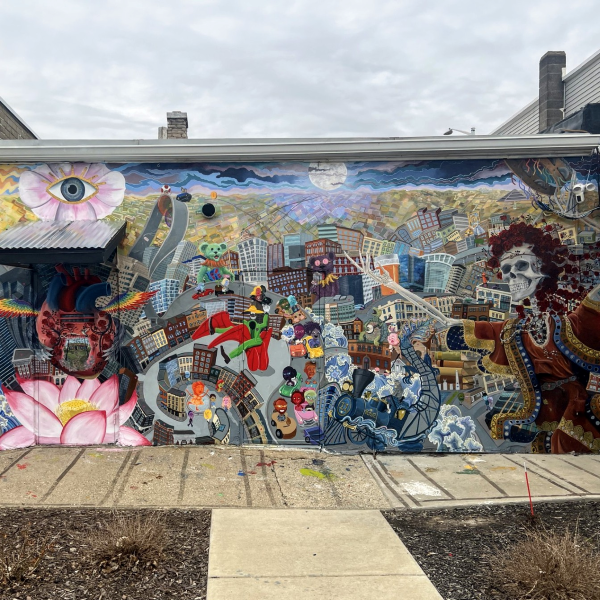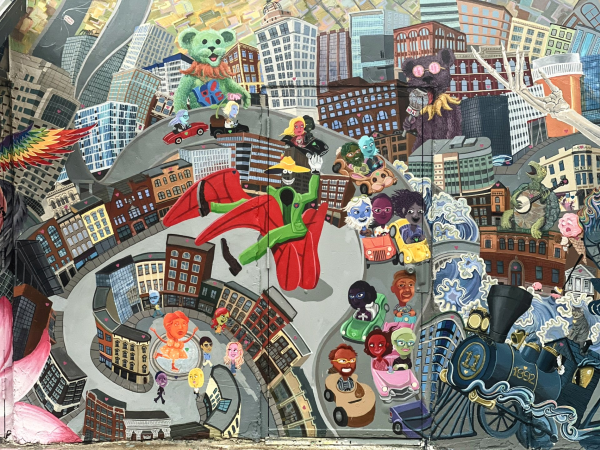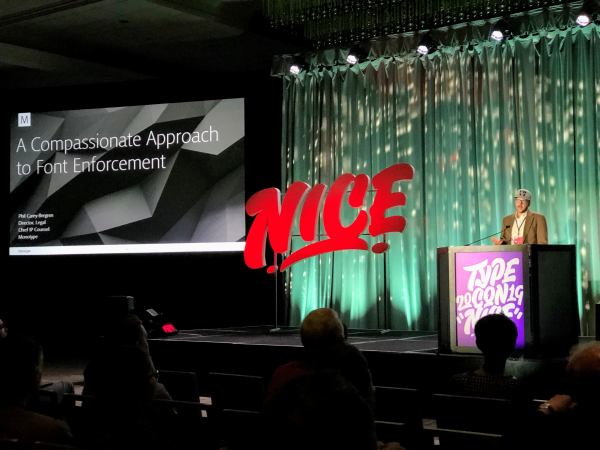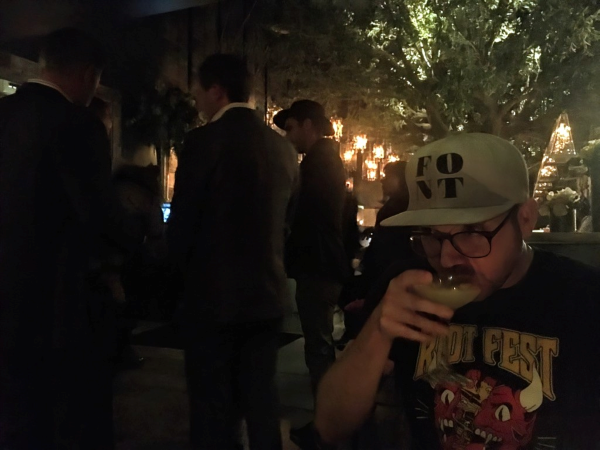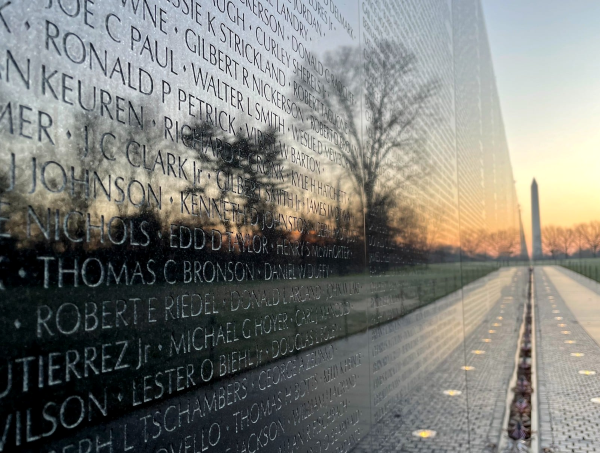Type Faces: Meet Phil Carey-Bergren.
Thought Leadership
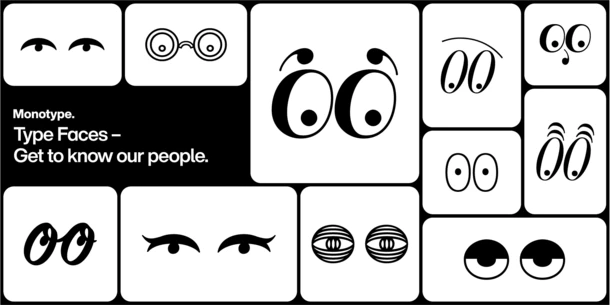
Thought Leadership
Type Faces: Meet Phil Carey-Bergren.
Welcome to our Type Faces series, where we’ll be sharing the stories of some of the fabulous people behind the type here at Monotype. From all around the globe and across the organization, our Monotype colleagues truly prove that, like Charles Nix, Senior Executive Creative Director at Monotype, always says, “We are ALL creative.”
Captivated by playing and listening to good music, Phil Carey-Bergren is an innovative thinker and creative who has a deep appreciation of the value of creative work. He has spent his entire professional career in the font industry. Recently, his professional focus has shifted, moving out of the legal department and into a new licensing role at Monotype.
Read on to learn more about Phil.
A portrait of Phil Carey-Bergren.
1. We’re all inspired by different things in life. Who or what inspires you?
I’m inspired when I’m able to see things from a new perspective. Art definitely does this for me — looking for the meaning in work, deciding how deeply you want to dig into a particular piece of music or art … I think that’s a lot of fun. I’m also inspired by the history and what was going on when these pieces were created.
I grew up playing music. My mom was a church organist and has played piano and the organ since before I was born. She taught me to read music at the same time she taught me how to read words.
Young Phil at the piano.
I picked up the bass in elementary school and played through college — in orchestra, jazz band, and rock bands with friends. All that time, I loved jazz, and I felt like I had a pretty good handle on it. My perception was that the jazz programs at the schools I went to were very straight-laced and academic — a bunch of kids performing an older style of music for their parents.
Playing the electric bass in his junior high band, Deprivation Theory.
But then in college I found out that all the jazz musicians I admired were actually just like the rock and grunge stars of today, with messy personal lives, controversies, and strong opinions. I discovered new and different layers of connection and meaning in the music I thought I had known so well.
A performance at the Double Door in Chicago with the Romanian folk/punk band Pet Peeve. Phil played bass on the band’s 2022 record.
2. As a musician, what’s an album you recommend and why?
I think everyone should listen to “Kind of Blue” by Miles Davis from start to finish — on good headphones.
Jazz is improvisational. There’s a structure to it and a melody that’s typically played at the beginning and the end of a piece, and then in between that, something happens that’s not super defined. The musicians have to figure out collectively how to get from the beginning to the end in an interesting and meaningful way that hasn’t been done before.
As you listen to this album, you know that there are so many different choices that they could have made, and these are the ones that they chose to release. The way it fits together is, for me, magical.
3. Besides music, how else does creativity fit into your life?
I try to do everything in my life creatively. I don’t enjoy doing the same thing twice the same way. That can be frustrating for others. But I get bored easily and I want to find new ways to do things and continuously improve.
One of many home improvement projects.
I take this approach to a lot of things. This is one of the reasons my wife and I love having an old house — there are endless opportunities for solving problems, and for making modern, functional improvements that are respectful of the house’s history.
4. Tell me more about this old house of yours.
It’s an 1875 house in Grand Rapids, MI, located in one of the largest protected historic districts in the country. It’s an unusual house — a blend of Romanesque, Shingle, and Gothic styles — and extremely well-preserved, as one of the founders of the historic district owned, restored, and preserved it for over 30 years.
The house.
This isn’t our first old house; we lived in a 1913 Chicago bungalow for 10 years before this. But this house is more complicated and much older, so the projects we’re doing are different.
5. Why did you move from Chicago to Grand Rapids?
I lived in the Chicago area for my entire life until last year. And Terrance Weinzierl, Executive Creative Director at Monotype, is the reason we moved here.
Phil and Terrance (in unplanned matching Monotype outfits) in Grand Rapids.
For the past few years, I was spending all my vacations in northern Michigan, which is just a beautiful and peaceful place. And my wife and I wanted to spend more of our time outside, not just when we’re on vacation.
A gorgeous view in Pictured Rocks National Lakeshore in Michigan.
So, on the way home from one of our trips to Michigan, we met up with Terrance in Grand Rapids, and he really sold us on this city! He recommended a realtor, and she found us our house literally the day we met her.
Moving here was the best decision we could have made. I love it here.
6. What do you love about Grand Rapids?
So, Chicago was a really cool place to live because you can find and do just about anything that’s interesting to you there. But over the years I’ve learned that I don’t need to have access to everything possible.
There are specific things that make me happy, and Grand Rapids is awesome for those specific things. Like rowing — rowing is extremely important to me, and I thought I had it pretty good in Chicago. But rowing on the Grand River is way better than I could have imagined. It’s become the foundation of my community here — I recently accepted a leadership position on the board of the Grand Rapids Rowing Club.
Phil on the water.
There are other things, too. We have more space here, so I can play music every day. It’s a city that really values art, especially public art, and the great outdoors. Being in an environment like this helps me perform at my best — at work and in life outside of work.
This interactive mural was created by Erica Kuhl for ArtPrize, an annual art contest in Grand Rapids that features many public art installations.
Detail of Erica Kuhl’s mural.
7. Tell me about work. What do you do at Monotype?
I’ve been working at Monotype for 14 years, and up until now I’ve been on the legal team. I started out as a baby contracts lawyer. Eventually, I moved into the Assistant General Counsel and Chief IP Counsel role, overseeing everything related to intellectual property at Monotype. Now, I’m in a new role as Monotype’s Vice President of Global Licensing and Strategy.
The legal team at their 2024 summit in India.
In my new role, I’m going to build on my legal team experience to establish a licensing function for the company. I’ll be responsible for global licensing alignment — basically, ensuring that our licensing models maximize our opportunities and play nicely together around the world. I’ll also be looking at what it will take to integrate new businesses and align with license models and sales plays. I’ll work with the products team to ensure there’s an intentional and clear connection between new features and license models to improve the customer experience and make our products even more enticing.
I’ll still be involved in intellectual property, but I’m looking forward to seeing what it’s like to do this from a non-legal perspective.
8. What do you love about your job?
The most important thing to me in my career is working with creative people, and I get to do that here. As a person who really values creativity and art in my personal life, I love that my job gives me the opportunity to not just work with creatives, but also ensure their work is valued by others.
When people think of creativity and design, typefaces aren’t necessarily the first thing that jumps to mind. Knowing the history of fonts, from different handwritten styles and calligraphy to designing typefaces for the printing press to digital typefaces today, I appreciate how much work goes into crafting each letter. Creating a new typeface means creating something that isn’t just readable, but communicates a feeling, personality, or idea, too. Subtle changes can have big impacts in type.
I’ve been here for a long time, but I still haven’t gotten bored. You can keep going deeper into this niche industry and continue to find something new. In particular, the evolution of technology has kept things interesting.
9. What’s the most exciting thing you’ve gotten to do at work?
I think the most fulfilling aspects of the job are also the most exciting. And I have found it very fulfilling to help my team members advance and progress in their careers. I love that we have created an environment that people want to work in — and even come back to.
I also get excited by doing things that make me uncomfortable. For me, that’s public speaking. In 2019, I presented at TypeCon to a large room full of people who all seemed to know a lot more about fonts than I did. That was an exciting challenge.
Phil presenting at TypeCon.
Lately, I’ve been working with Carl Unger and the content team on our Behind the Font podcast to demystify font licensing. That’s given me an appreciation for how much work goes into it, and it’s been really cool to see how much other people get from the podcast.
10. What’s something that would surprise people about you?
I’m actually a fan of some of the Real Housewives franchises on Bravo. There’s an interesting shift happening among these types of reality shows — they’re breaking down (or sometimes winking over) the fourth wall rather than ignoring it. I find it completely fascinating.
On a business trip to Los Angeles, Phil stopped by a bar owned by cast members from one of his favorite reality shows, Vanderpump Rules.
And these people react to the various situations they find themselves in differently than I would have ever imagined. I enjoy seeing that chaos and trying to figure it out. Like, is this real? Are there actually people who behave like this or think like this? Or is this just for the TV show? It’s an opportunity to see people with completely different lives than my own.
11. What’s a font you love and why?
I love Optima by Hermann Zapf. The story behind this font was probably the first typeface story I heard when I came to Monotype and it’s just really stuck with me.
The story goes Zapf was wandering around a Renaissance-era graveyard in Italy and he saw this tombstone with engraved lettering. He did a rubbing of it and transformed it into a really unique typeface with these flared terminals that make it almost a semi-serif font.
Today, it’s a typeface that’s used in some really prominent settings, like the Vietnam Veterans Memorial in Washington, D.C. and the National September 11 Memorial in NYC. I think it’s really fitting that this typeface, which was inspired by lettering carved into stone, is used today in these monumental settings.
The Vietnam Veterans Memorial reflection in low light, taken by the National Park Service on March 30, 2022. Licensed under the Creative Commons Attribution 2.0 Generic license.
12. What do you find interesting about typography?
We all read content every day on our computers and most of us don’t think twice about the type. But, due to my career, I have a sense of how many people and how much work is involved in getting these letters onto the screen. I like that it’s so complex. There’s so much that goes into creating a functional font that I know I’ll never fully grasp it.
I also really like the parallels between typography and fashion from a legal perspective. These are both industries that are extremely creative, but also functional. Clothes cover and protect our bodies; type enables us to quickly and accurately distribute information. But they’re both more than their utility — by choosing a particular outfit or typeface, you also can communicate emotion, personality, tone, and even your values.
You can have these abstract discussions and debates about the extent of protectible creative expression. Like fashion, typography offers a lot of leeway to create your own rules or define the environment. We actually have a lot of freedom to define what we’re doing and what makes sense for us as an industry.

Vice President of Global Licensing and Strategy
Phil Carey-Bergren.
Phil Carey-Bergren is Vice President of Global Licensing and Strategy at Monotype, one of the largest providers of typography, technology, and expertise. In this role, Phil leads the development and execution of comprehensive global licensing and IP strategies.
